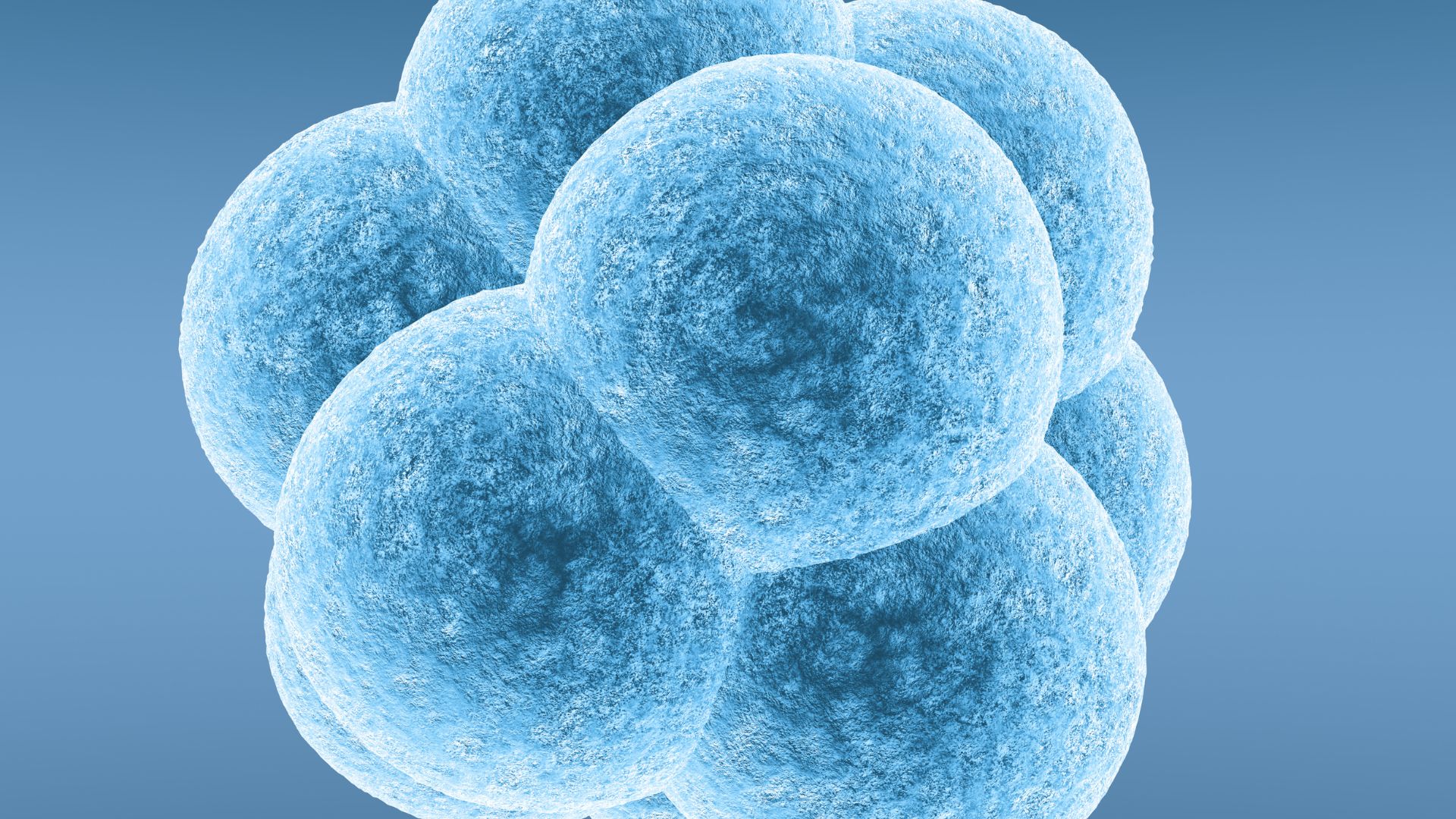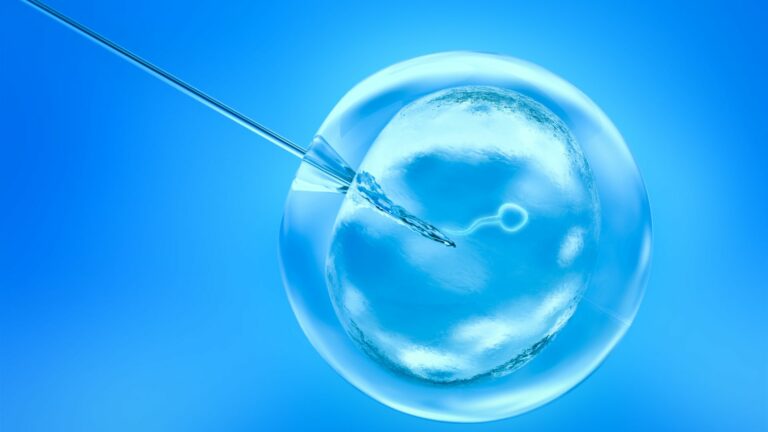
During in vitro fertilization (IVF), the development of embryos takes place in a laboratory setting.
Advances in genetic testing, specifically Preimplantation Genetic Testing for Aneuploidy (PGT-A), have led to the ability to detect mosaicism in these embryos.
A mosaic embryo contains a mixture of chromosomally normal (euploid) and abnormal (aneuploid) cells.
This article delves into the complexities surrounding mosaic embryos, including the associated risks, potential benefits, and crucial factors to consider when making decisions about their transfer.
Key Takeaways
- Mosaic embryos contain a mix of normal and abnormal cells, detectable through PGT-A testing.
- Transferring mosaic embryos carries risks such as lower implantation rates, higher miscarriage rates, and potential developmental issues.
- In some cases, mosaic embryo transfer may offer the only chance for a biological child, especially for couples with limited embryos.
- Genetic counseling plays a vital role in helping patients understand personalized risks and make informed decisions.
- Alternative family-building options should be explored alongside considering mosaic embryo transfer.
1. The Significance of Mosaicism Detection
The advent of PGT-A has revolutionized the understanding of embryo genetics during IVF.
In the past, embryos were classified solely as normal or abnormal based on their chromosomal makeup.
However, the ability to detect mosaicism has added a new layer of complexity to the decision-making process.
Mosaicism arises when errors occur during cell division, resulting in an embryo containing cells with different chromosomal profiles.
These abnormalities can involve:
- An incorrect number of chromosomes (aneuploidy)
- Structural changes to chromosomes
Recognizing mosaicism is crucial because it offers potential options for couples who might otherwise have no viable embryos to transfer.
Rather than discarding all embryos with any abnormalities, the presence of normal cells alongside abnormal ones presents a possibility worth exploring.
Reader Reflection: Have you encountered the concept of mosaicism before? Share your thoughts and experiences in the comments below.
2. Risks Associated with Mosaic Embryo Transfer
While mosaic embryos may offer hope, it is essential to understand the risks involved in their transfer.
Compared to fully euploid embryos, mosaic embryos face several challenges:
- Lower Implantation Rates: Mosaic embryos have a reduced likelihood of successfully implanting in the uterus. The presence of abnormal cells can hinder the embryo’s ability to establish a healthy pregnancy.
- Higher Miscarriage Rates: Even if implantation occurs, mosaic embryos are associated with an increased risk of miscarriage. The chromosomal abnormalities present in some cells may lead to the early loss of the pregnancy.
- Developmental Concerns: There is a possibility that the chromosomally abnormal cells in a mosaic embryo could impact the development of the resulting child. Potential issues include:
- Birth defects
- Developmental delays
- Uniparental disomy (UPD) – inheriting two copies of a chromosome from one parent and none from the other
- Confined placental mosaicism (CPM) – chromosomal abnormality confined to the placenta
It is important to note that the severity of these risks varies depending on factors such as the specific chromosomal abnormality, the level of mosaicism (percentage of abnormal cells), and the location of the abnormal cells within the embryo.
Tip: Consult with a genetic counselor to gain a personalized understanding of the risks associated with your specific situation.
3. Potential Benefits of Mosaic Embryo Transfer
Despite the risks, there are situations where transferring a mosaic embryo may be a viable option to consider.
The primary benefit lies in the potential for achieving a successful pregnancy and birth when no fully euploid embryos are available.
For some couples, especially those facing challenges such as advanced maternal age, diminished ovarian reserve, or a limited number of embryos from an IVF cycle, a mosaic embryo may represent their best chance at having a biological child.
The alternative – not transferring any embryos at all – may be a less desirable option.
Moreover, there have been documented cases of healthy live births resulting from the transfer of mosaic embryos.
Research suggests that the human body may possess mechanisms to “self-correct” during development, potentially eliminating abnormal cells and allowing normal cells to thrive.
Valuable Resource: Learn more about the outcomes of mosaic embryo transfers by watching this informative webinar on the International Registry of Mosaic Embryo Transfers.
4. The Role of Genetic Counseling in Decision-Making
Navigating the complex landscape of mosaic embryo transfer requires the guidance of a skilled genetic counselor.
These professionals play a crucial role in helping patients understand the intricacies of their specific situation and make informed decisions.
During a genetic counseling session, you can expect:
- An explanation of the specific chromosomal abnormality detected in your embryo(s)
- A discussion of the personalized risks and benefits based on your unique circumstances
- Assistance in weighing your options and making a decision that aligns with your values and goals
- Emotional support throughout the potentially stressful decision-making process
In addition to genetic counseling, there are other important factors to consider when contemplating mosaic embryo transfer:
- Patient age: Younger patients may have higher chances of success or the option to undergo additional IVF cycles.
- Overall health: Your general health and fertility history can impact the decision.
- Ethical considerations: Some couples may have ethical or religious concerns to explore.
Action Step: Schedule a consultation with a reputable genetic counselor to discuss your specific situation and receive personalized guidance.
5. Alternative Family-Building Options
While mosaic embryo transfer offers a potential path to parenthood, it is essential to be aware of alternative family-building options. These include:
Each alternative comes with its own set of considerations, benefits, and challenges. It is important to explore these options thoroughly and determine which aligns best with your personal values, preferences, and circumstances.
Reader Engagement: Have you considered or pursued alternative family-building options? Share your experiences and insights in the comments section.
To illustrate the decision-making process, let’s consider a hypothetical case study:
Case Study: A 38-year-old woman with diminished ovarian reserve has undergone two IVF cycles. In her most recent cycle, she has one mosaic embryo with a low level of mosaicism.
Her genetic counselor explains the potential risks and benefits, and together they decide to proceed with a mosaic embryo transfer.
Remember, every patient’s situation is unique, and what may be the right choice for one couple may not be appropriate for another.
6. Factors Influencing the Risks of Mosaic Embryo Transfer
Several key factors play a role in determining the level of risk associated with transferring a mosaic embryo:
- Type of Chromosomal Abnormality: Certain chromosomal abnormalities are more likely to impact embryo development and result in adverse outcomes.
For example, abnormalities involving chromosome 13, 18, or 21 are associated with well-known genetic disorders such as Patau syndrome, Edwards syndrome, and Down syndrome, respectively. - Level of Mosaicism: The percentage of abnormal cells present in the embryo, known as the level of mosaicism, is a crucial consideration.
Higher levels of mosaicism (a greater proportion of abnormal cells) generally carry a higher risk of developmental issues and pregnancy complications. - Location of Abnormal Cells: The distribution of abnormal cells within the embryo can influence the potential impact on the resulting pregnancy.
If the abnormal cells are primarily confined to the trophectoderm (the part of the embryo that develops into the placenta), there may be a lower risk of affecting the developing fetus compared to abnormalities present in the inner cell mass (the part that forms the baby).
The table below summarizes these risk factors and their potential implications:
| Factor | Higher Risk | Lower Risk |
|---|---|---|
| Type of Abnormality | Chromosomes 13, 18, 21 | Other chromosomes |
| Level of Mosaicism | High-level mosaicism (>50% abnormal cells) | Low-level mosaicism (<30% abnormal cells) |
| Location of Abnormal Cells | Inner cell mass (fetal tissue) | Trophectoderm (placental tissue) |
Tip: Discuss these specific risk factors with your genetic counselor to gain a more personalized understanding of your situation.
7. Deciding to Transfer a Mosaic Embryo: A Step-by-Step Guide
Making the decision to transfer a mosaic embryo is a highly personal choice that should be made after careful consideration and consultation with fertility specialists and genetic counselors.
Here is a step-by-step guide to help navigate the decision-making process:
Understand the Specific Details of Your Mosaic Embryo(s):
- Review the PGT-A results with your fertility doctor and genetic counselor.
- Ask questions to clarify the type of chromosomal abnormality, level of mosaicism, and any other relevant details.
Assess Your Personal Circumstances and Priorities:
- Consider factors such as your age, overall health, fertility history, and family-building goals.
- Reflect on your emotional readiness to navigate the uncertainties associated with mosaic embryo transfer.
Explore Alternative Options:
- Discuss the feasibility and potential success rates of undergoing additional IVF cycles to obtain euploid embryos.
- Consider alternative family-building options, such as using donor eggs or sperm or pursuing adoption.
Weigh the Risks and Benefits:
- Evaluate the personalized risks and potential benefits of transferring a mosaic embryo based on your specific circumstances.
- Consider the emotional, financial, and practical implications of each option.
Seek Support and Guidance:
- Schedule consultations with a genetic counselor and/or mental health professional to discuss your concerns and feelings.
- Connect with support groups or online communities to learn from others who have faced similar decisions.
Make an Informed Decision:
- Take the time to process the information and discuss your thoughts with your partner (if applicable) and trusted loved ones.
- Trust your instincts and make a decision that aligns with your values, goals, and comfort level.
Remember, there is no “right” or “wrong” choice when it comes to deciding about mosaic embryo transfer.
The most important thing is to make an informed decision that feels right for you and your unique situation.
Share Your Thoughts: If you have faced the decision of whether to transfer a mosaic embryo, consider sharing your experience and insights in the comments section below.
Your story may provide valuable support and guidance to others navigating this complex journey.
8. Interpreting and Contextualizing Mosaic Embryo Research
As research continues to evolve in the field of mosaic embryos, it is essential to critically evaluate and contextualize the available data.
When reviewing studies and statistics related to mosaic embryo transfer, consider the following:
- Study Design and Sample Size: Assess the methodology used in the research, including factors such as sample size, inclusion criteria, and control groups.
Larger, well-designed studies with diverse patient populations may provide more reliable insights compared to smaller, single-center studies. - Specific Outcomes Measured: Pay attention to the specific outcomes reported in the research, such as implantation rates, ongoing pregnancy rates, miscarriage rates, and live birth rates. Consider how these outcomes align with your personal priorities and goals.
- Limitations and Confounding Factors: Recognize the limitations inherent in any study, such as potential confounding factors (e.g., maternal age, underlying cause of infertility) that may influence the results. Be cautious when interpreting findings based on limited or preliminary data.
- Applicability to Your Situation: Consider how closely the study population and circumstances match your own.
Factors such as patient age, type of chromosomal abnormality, and level of mosaicism can vary widely, impacting the relevance of the research to your specific case.
Here’s an example of how to interpret a hypothetical research finding:
Research Finding: A study involving 100 mosaic embryo transfers reported a live birth rate of 30% and a miscarriage rate of 20%.
Interpretation:
- The sample size of 100 transfers provides a reasonable foundation for drawing insights, but larger studies would offer greater confidence in the findings.
- The live birth rate of 30% suggests that transferring a mosaic embryo can lead to a successful pregnancy and birth in some cases.
However, it is important to consider this rate in the context of your specific circumstances and the alternative options available to you. - The miscarriage rate of 20% highlights the increased risk associated with mosaic embryo transfer compared to the transfer of euploid embryos. This information should be weighed carefully when making your decision.
Engage with the Experts: If you come across research findings that raise questions or concerns, don’t hesitate to discuss them with your fertility doctor or genetic counselor. They can help you interpret the data and understand its relevance to your unique situation.
9. Support Resources for Navigating Mosaic Embryo Decisions
Deciding whether to transfer a mosaic embryo can be an emotionally challenging and complex process.
It is important to know that you are not alone and that there are support resources available to help you navigate this journey:
- Genetic Counseling: Genetic counselors specializing in reproductive medicine can provide invaluable guidance and support throughout the decision-making process.
They can help you understand the specific details of your mosaic embryo, assess personalized risks and benefits, and explore alternative options.
Consider reaching out to a reputable genetic counseling service, such as Birth Defect and Genetic Counselling or Lilac Insights. - Mental Health Professionals: The emotional toll of fertility treatments and difficult decisions can be significant.
Seeking the support of a mental health professional, such as a therapist or counselor, can provide a safe space to process your feelings, work through decision-making challenges, and develop coping strategies.
Many fertility clinics have in-house mental health professionals or can provide referrals to external resources. - Support Groups: Connecting with others who have faced similar experiences can offer a sense of community, validation, and practical guidance.
Consider joining a support group specifically for individuals and couples navigating fertility challenges and treatment decisions.
Organizations like The Infertility Friends (TIF) and Infertility Dost offer various support services and resources. - Online Communities: Engaging with online communities focused on fertility and IVF can provide a platform for sharing experiences, seeking advice, and finding emotional support.
Popular options include forums on websites like Fertile Thoughts and social media groups dedicated to infertility and assisted reproductive technology. - Educational Resources: Staying informed about the latest research, guidelines, and expert opinions related to mosaic embryos can help you make well-informed decisions.
Reputable organizations, such as the Indian Society for Assisted Reproduction (ISAR) and the Asia Pacific Initiative on Reproduction (ASPIRE), offer educational materials, webinars, and conferences that can provide valuable insights.
Take Action: Identify the support resources that resonate with you and take steps to incorporate them into your journey.
Whether it’s scheduling an appointment with a genetic counselor, joining a support group, or bookmarking informative websites, proactively seeking support can make a significant difference in navigating the challenges of decision-making.
Here are some additional location-specific resources for those considering mosaic embryo transfer:
- IVF Centers in Mumbai
- IVF Centers in Bangalore
- IVF Centers in Hyderabad
- IVF Centers in Pune
- IVF Centers in Kolkata
- IVF Centers in Chandigarh
- IVF Centers in Jaipur
- IVF Centers in Gurgaon
- IVF Centers in Noida
- IVF Centers in Kochi
These resources can help you find experienced fertility specialists and genetic counselors in your area who can provide personalized guidance and support throughout your journey.






